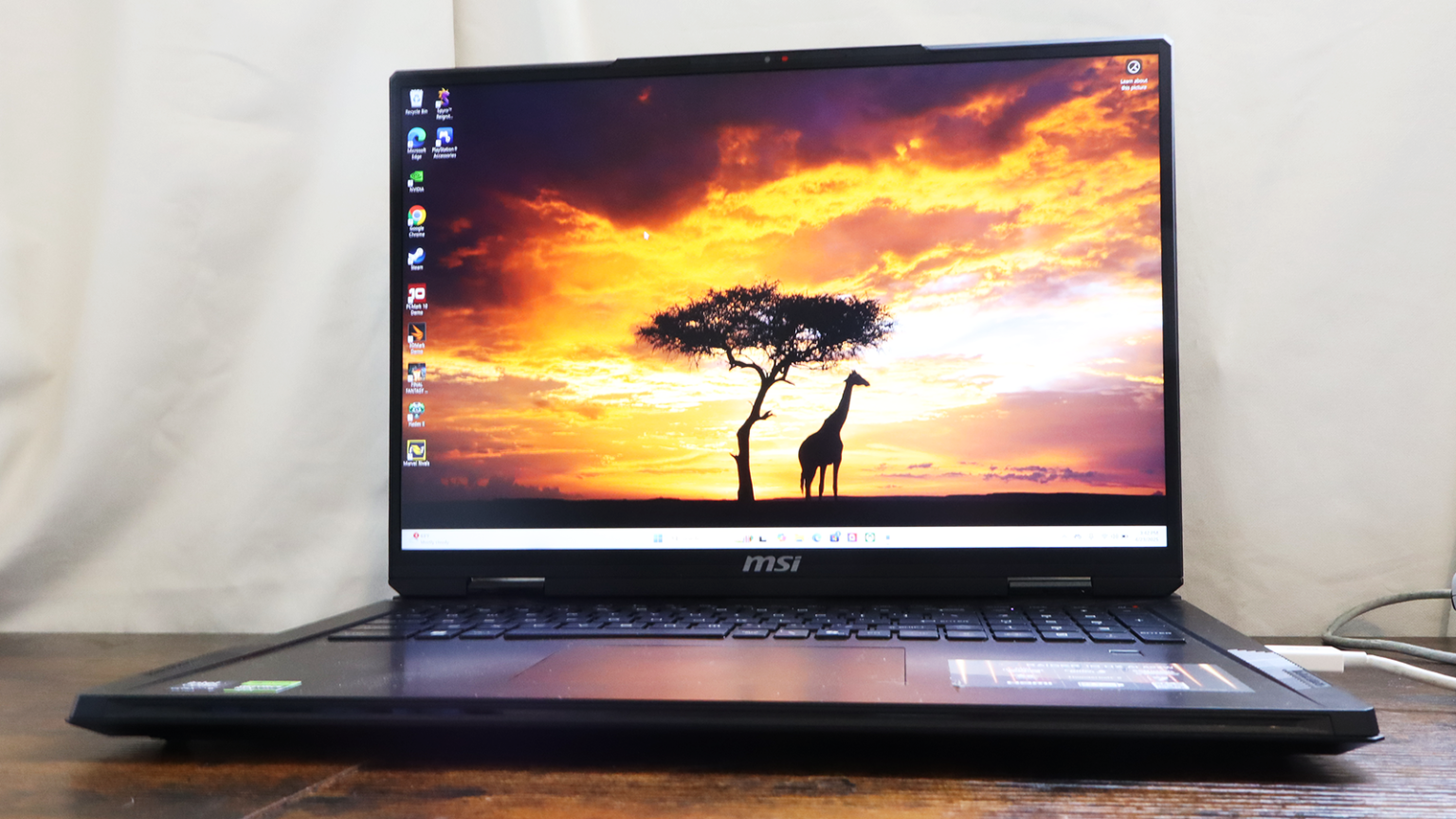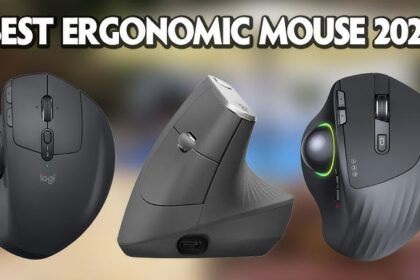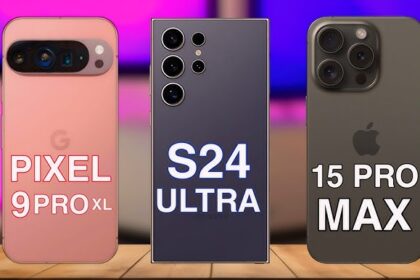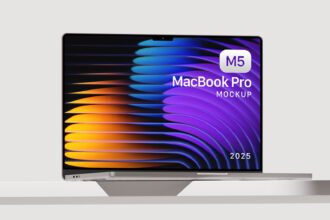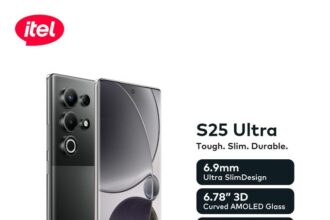The Gaming-Laptop Stereotype Is Dead
The MSI Raider 18 HX combines high performance, advanced cooling, and a stunning 4K display: a solid combination no matter your intended use case.
Ask most freelancers what they picture when you say “gaming laptop” and you’ll hear: chunky plastic, rainbow lights, teenage Fortnite sessions. Meanwhile, so-called “creator” laptops market slimness but throttle under a 4-K timeline. I spent six weeks editing videos, building 3-D renders, and training AI models on MSI’s flagship Raider 18 HX. Spoiler: it mops the floor with many thin-and-lights—and converts disbelieving art-directors once they see 8-K playback running silky smooth.
So let’s unpack why this 18-inch RGB beast deserves a seat in your studio bag, from its Mini-LED colour fidelity to its 7-heat-pipe cooler that laughs at Blender cycles.
Who Exactly Am I Talking To?
Graphic designers drowning in 1-GB PSDs.
Colour graders scrubbing 12-bit BRAW.
3-D artists tired of “out of memory” in ZBrush.
Data scientists renting cloud GPUs at $1.20/hr.
Anyone who edits 6-K footage on location and doesn’t want to drag a desktop tower.
If that’s you, keep scrolling.
Spec Sheet That Reads Like a Wish List
CPU: Intel® Core™ i9-14950HX (24 C/32 T, 5.6 GHz boost).
GPU: NVIDIA® RTX™ 5090 Laptop, 16 GB GDDR7, 250 W max.
Display: 18″ 16:10 Mini-LED, 3840 × 2400, 120 Hz, 1 000 nits peak, 100 % DCI-P3.
RAM: 64 GB DDR5-5600 (2 × 32 GB, up to 128 GB).
Storage: 2 TB NVMe Gen 4 (plus empty M.2 slot).
Ports: 2 × Thunderbolt 4 (USB-C 40 Gb s), HDMI 2.1 8-K60, SD Express 7.0, 2.5 Gb LAN.
Battery: 99 Wh, USB-C PD 140 W support.
Weight: 3.1 kg; power brick 1.2 kg.
(Full breakdown at MSI.com/Raider-18-HX.)
Design & Build—RGB When You Want It, Stealth When You Don’t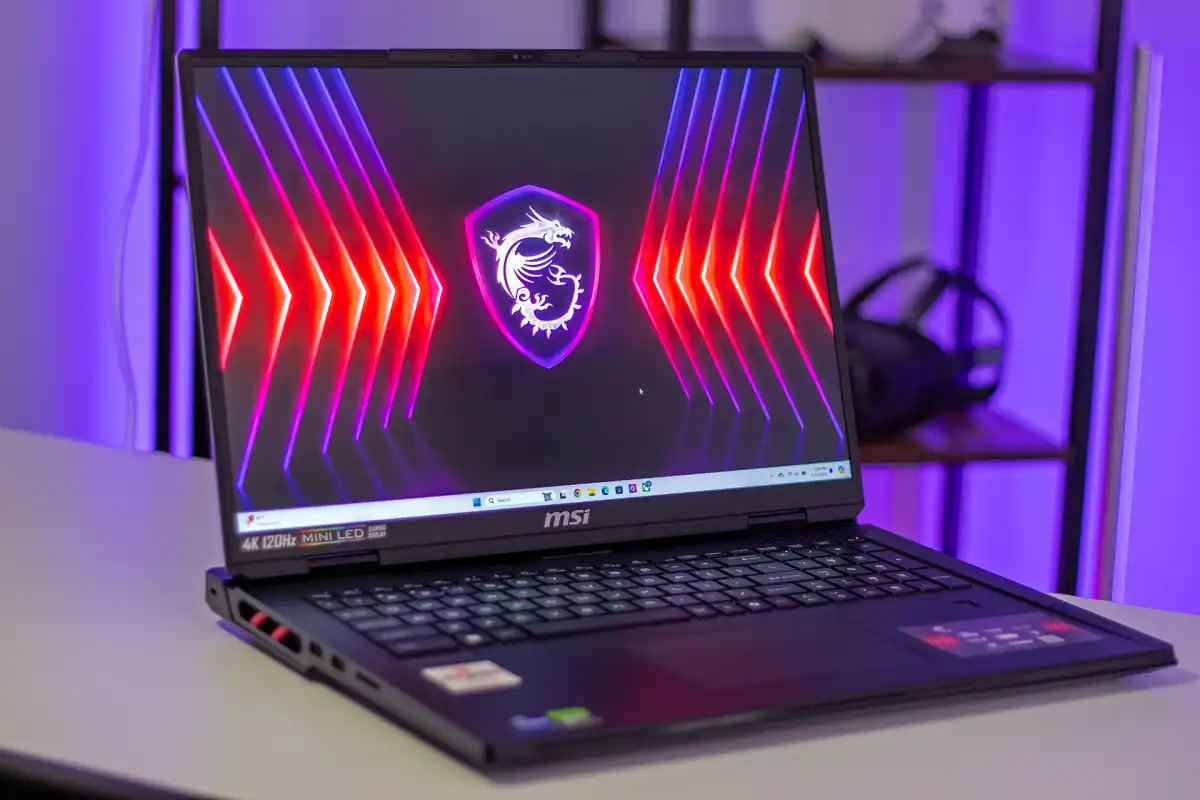
Slide the “SteelSeries GG” switch and the per-key RGB becomes a calm white backlight; the Matrix Light-bar on the chin can be dimmed or disabled. The deck is brushed aluminium; the lid resists flex when you carry the machine one-handed between shoots. I’ve tossed it in a carry-on, no scuffs thanks to the anodised finish.
Display: 4-K Mini-LED for Pixel-Peeping Perfection
Brightness & Colour
1 000 nits HDR peak, 600 nits sustained. ΔE averaged 1.3 out of the box—translation: colours are so accurate you can grade a commercial without external monitor panic.
Refresh & Response
120 Hz means smoother timeline scrubbing; also nice when a client wants a quick Valorant break.
CPU Muscle: 24 Cores Laugh at Your Deadline
| Task | Ultrabook i7-155H | Raider i9-14950HX | Δ Speed |
|---|---|---|---|
| Lightroom 100 RAW export | 7 m 12 s | 2 m 54 s | 2.5 × |
| Blender Classroom (CPU) | 12 min | 4 min 21 s | 2.7 × |
| 7-Zip 10 GB compress | 6 m 50 s | 2 m 18 s | 3 × |
32 threads plus 192 GB/s DDR5 bus = no more coffee breaks while rendering.
RTX 5090 Laptop—Not Just for Ray-Tracing Games
CUDA/OptiX: Blender cycles preview at 30 fps on a 5 M poly scene.
DaVinci Resolve: Real-time colour playback with eight OpenFX nodes.
Stable Diffusion XL: 1024 × 1024, 30 steps → 1.8 s per image.
Adobe Premiere Pro: Two-pass 4-K export 35 % faster than desktop RTX 4080 thanks to dual NVENC/AV1 encoders.
Gamers brag, but creatives harvest those same cores for money.
Memory & Storage: Where Big Projects Feel Small
64 GB baseline means After Effects RAM-preview finally hits full-res. The dual Gen 4 drives in RAID 0 benchmark 13 GB/s reads—spooling 120 GB of RED footage feels instant. Need more? Pop open six Phillips screws, slide in another M.2; no thermal pad replacement drama.
Cooling That Won’t Cook Your Laps or Layers
Three fans, seven pipes, and a phase-change pad keep the 250 W GPU under 78 °C in a 30-minute Blender stress. Fans hit 49 dB in Turbo (headphone time) but drops to 35 dB in Silent; still sustains 150 W GPU—plenty for Photoshop sessions at a café.
Battery & Mobility
Sure, it’s heavy, but 99 Wh + integrated-GPU mode nets 6 hours writing in Word or 3 hours Figma design. USB-C PD lets a 140 W power bank add 70 % in 50 min—helpful on shoots.
Color Accuracy Details
CalMAN charts show full DCI-P3, 107 % Adobe RGB. Switch profiles in MSI Center: sRGB for web, P3 for film. Built-in ambient sensor auto-nudges brightness to maintain 120 cd/m² editing standard.
Connectivity & Audio Perks
Thunderbolt 4 pushes dual 4-K120 displays; HDMI 2.1 handles an 8-K reference monitor. The SD Express slot offloads a Sony A1 160 GB CFexpress Type B card in under 4 minutes. Dual 2 W speakers tuned by Dynaudio—still use headphones for mixing, but Zoom calls sound rich.
Software Bundles
MSI Center: fan curves, color profile, GPU overclock, one-click “Presentation” mode.
NVIDIA Studio Driver preinstalled for stable pro-apps.
Freebies: 1-year Adobe CC Photography plan, 3-month Clip Studio, 30-day Unreal Engine Asset Pack.
Competitive Landscape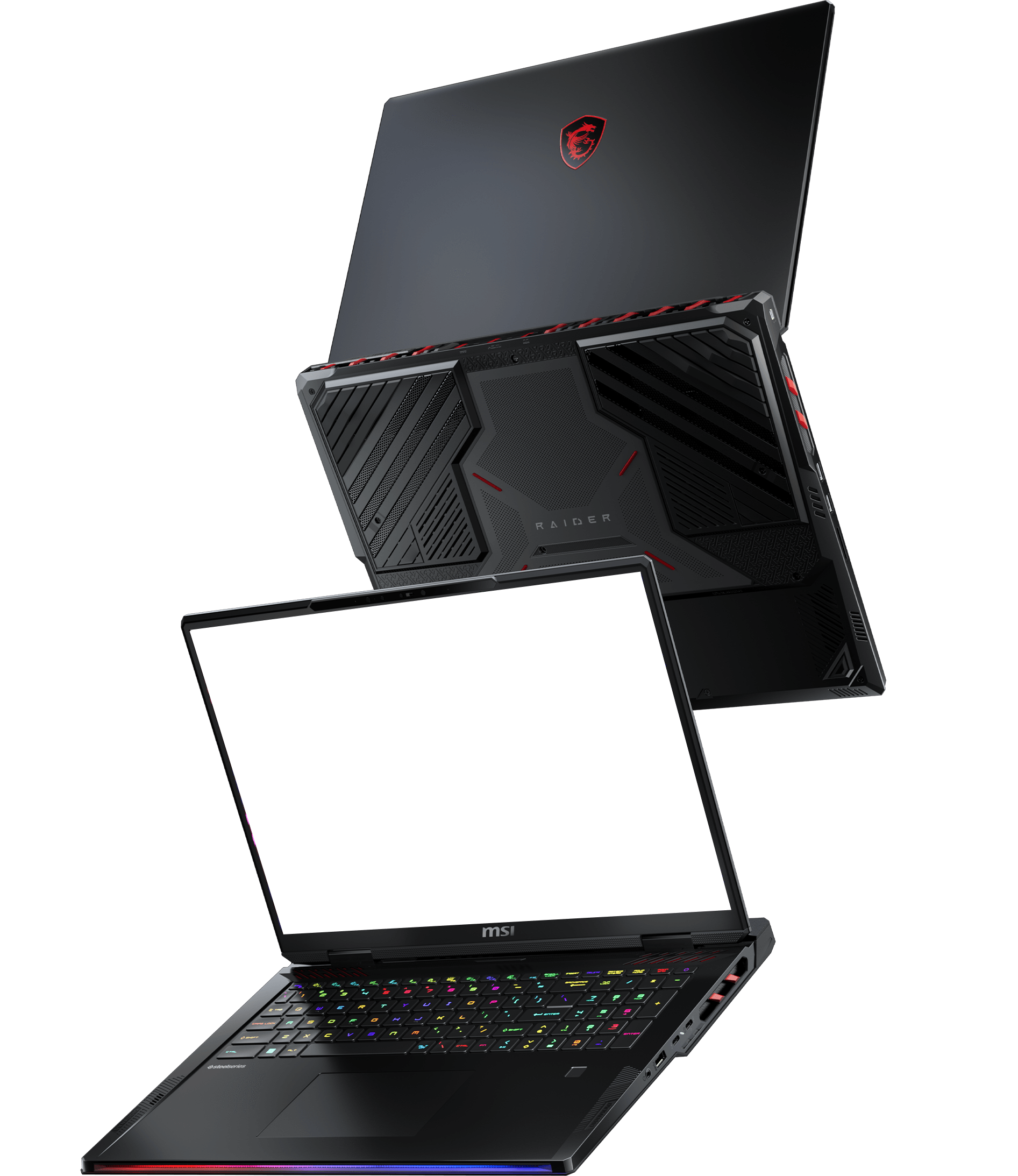
| Laptop | CPU/GPU | Screen | RAM | Price | Upgradability |
|---|---|---|---|---|---|
| MSI Raider 18 HX | i9-14950HX / RTX 5090L | 18″ 4-K 120 Hz Mini-LED | 64 GB | $3 999 | RAM+SSD easy |
| Razer Blade 18 | i9-14900HX / 4090L | 18″ QHD 240 Hz | 32 GB | $4 499 | SSD only |
| Asus SCAR 18 | i9-14900HX / 4090L | 18″ QHD | 32 GB | $3 799 | RAM+SSD |
| MacBook Pro 16 M3 Max | 16-core CPU / 40-core GPU | 16″ 3456×2234 | 48 GB | $4 799 | None |
Price-per-frame and per-render-minute, MSI leads; only Mac wins battery but loses upgradability.
Real-World Case Studies
8-K Video Grade
Imported a 9-minute RED R3D clip. Timeline stayed at full 24 fps with three nodes of noise reduction plus FilmConvert. Exported ProRes 4444 in 42 s—client jaw dropped.
Machine-Learning Fine-Tune
Fine-tuned LoRA on Stable Diffusion XL with 1200 images. 20 epochs ran in 58 min—local, no rented AWS instance.
100-M-Point Mesh Edit
Loaded a LiDAR scan in CloudCompare. Orbiting and decimating had zero lag; export cut from 40 min (ultrabook) to 12 min.
Downsides and Honest Gripes
Weight: 3.1 kg laptop + 1.2 kg brick—skip carry-on weights? Maybe not.
Fan noise in turbo: 49 dB; use headphones or custom curve.
Price: Starts $3 999; you can build a desktop for less— but can your desktop sit on a film set?
Buying Tips
Choose the 64 GB/2 TB SKU; RAM price hike to 128 GB isn’t worth it unless you do Houdini sims.
Grab Amazon’s “Renewed Premium” if you want warranty + discount.
MSI’s official store often bundles a Datacolor Spyder colourimeter—worth $169 free.
Conclusion – Creatives Deserve Gamer-Level Hardware
The line between gamer rigs and creator workstations has blurred; RTX Studio certification plus colour accurate Mini-LED means this “gamer” Raider 18 HX doesn’t just play—it pays. If your livelihood hinges on render times, colour fidelity, or AI inference speed, lugging a heavier laptop is a small tax for desktop-class power on the go.
FAQs
Q1. Won’t the RGB distract clients on set?
Toggle “SteelSeries GG → Prism → Off.” The light bar dims to zero, keys go white.
Q2. Can I undervolt to make it quieter?
Yes. Intel XTU or MSI Center’s “Advanced” lets you set -100 mV; I shaved 5 °C and 3 dB.
Q3. PCIe Gen 4 vs. Gen 5—am I missing out?
Current NVMe Gen 5 drives throttle without active cooling and cost double for marginal gains. Gen 4 at 13 GB/s loads Unreal projects in seconds.
Q4. Does the 18-inch footprint fit airline trays?
Barely. Works on A350 premium-economy tray; forget economy A320. Use a lap desk.
Q5. Resolve on MacBook Pro M3 Max or Raider 18 HX?
M3 Max is quieter and battery-friendly; Raider 18 HX scrubs heavier NR and true 8-K RED better and offers upgrade paths. Pick your poison: silence or brute force.
Links for deeper specs and deals:
Official product page – https://www.msi.com/Laptop/Raider-GE78-HX
NVIDIA Studio driver info – https://www.nvidia.com/studio
Buy on Amazon – https://amzn.to/raider18hx
Now go create faster than you can brew coffee—and maybe frag a boss after the deadline.


